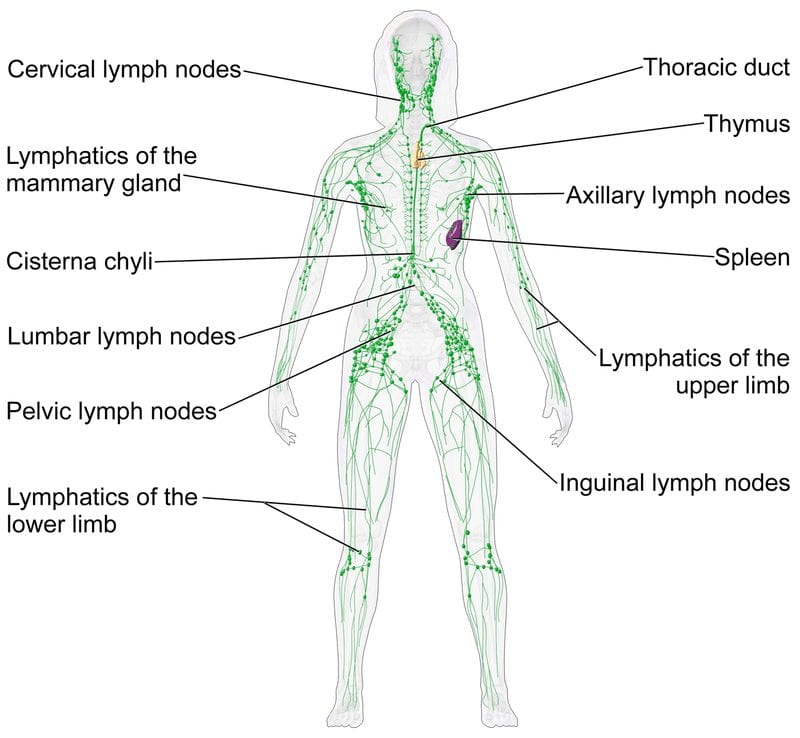
[footnote]Blausen.com staff. “Blausen gallery 2014“. Wikiversity Journal of Medicine.
DOI:10.15347/wjm/2014.010. ISSN 20018762. – Own work, CC BY 3.0[/footnote]
Lymphatic Drainage Massage
Manual Lymphatic Drainage (MLD) specifically works on your lymphatic system.
The lymphatic system is linked to, yet separate from, the blood circulatory system. Where the blood delivers nutrients and the building blocks of your life around your body, the lymphatic system is tasked with taking away the leftovers and any debris or metabolic wastes.
If your lymphatic system is unable to remove fluid (lymph) efficiently you may develop swelling or oedema.
MLD can help. It is amazing how a method so gentle can be so effective.
Manual lymphatic drainage is useful for immune function support, stubborn digestion, damage to or removal of lymphatic structures, and swelling of the limbs or face.
People who get lymphatic drainage massage often report feelings of lightness and relaxation. In some cases, they need to rush to the bathroom as it can stimulate bowel and urinary function!
How does MLD work?
Manual lymphatic drainage works by assisting the movement of fluid into the lymphatic vessels, and then along the vessels towards collection areas called lymph nodes. The major collection areas are located behind your knees, in your groin, around your intestines, in your armpits, and in your neck.
To assist the movement we also have you take some deep breaths. This changes the internal pressure of your chest cavity, and as you breathe out and the internal pressure drops, it sucks the lymph fluid into your body where it can re-enter the bloodstream near your heart.
When you come for your appointment I will explain more about how your lymphatic system works, because I believe that it helps the process to be able to visualise what is taking place in your body.
To read more about the lymphatic system and how it works, check out the Australian Lymphology Association website.
